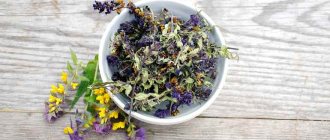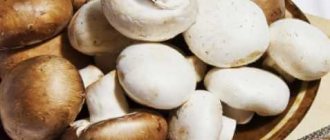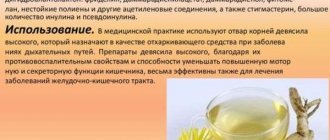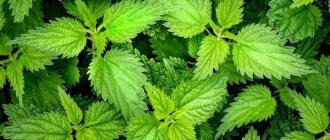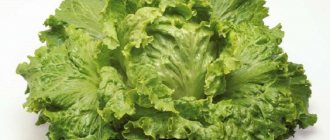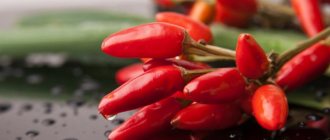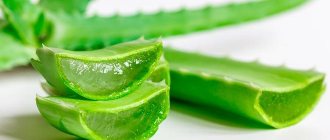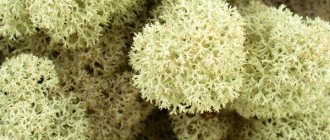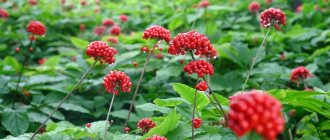Description of the violet tricolor plant
Tricolor violet or pansy (lat. Víola tricolor) is a herbaceous plant common in Europe and temperate regions of Asia. The plant belongs to the species of the genus Violet of the Violet family.
The popular name is Ivan-da-Marya, but plants of other genera are also called this way, for example, the oak grove (Melampyrum nemorosum) from the Norichnikov family. Other popular names for the plant: brother-and-sister, moths, field brothers, half-flower, axes, three-flowered.
In gardening, pansies are also often called the hybrid Wittrock violet (Viola x wittrockiana Gams ex Hegi), which has larger, brighter flowers.
What does a tricolor violet look like?
Violet tricolor is an annual or biennial herbaceous plant. The stem is straight or branched, from 5 to 45 cm in height. The leaves are simple, the upper ones are elliptical, the lower ones are ovate.
The flowers are beautiful, the upper petals are mostly purple or blue, the lower petals are yellow and white. Flowering time occurs in April, fruits ripen in June.
In June, the elongated three-headed top of the plant ripens, storing seeds that promote further propagation of the flower. The tricolor violet is much smaller than its usual garden counterpart and is always painted in three different colors.
Where does tricolor violet grow?
The plant is widespread in Eastern Europe, Siberia, the Far East, Scandinavia, and Asia Minor. In the “Atlas of areas and resources of medicinal plants of the USSR”, tricolor violet is described as a European species, found in Siberia only as an alien plant.
The northern border of the distribution area extends to the cities of Kirovsk, Murmansk, Kandalaksha, White Sea, Ponoy (Kola Peninsula), Mezen, Ukhta, Pechora, Vorkuta. Further, the border goes along the 60th meridian to Yekaterinburg, wedging in the east near Tobolsk. Individual locations are known in the vicinity of Tomsk, in the Kemerovo region, Krasnoyarsk and Altai territories, where tricolor violet is found as a weed.
The southern border of the range runs through Chelyabinsk to Izhevsk, then through Samara, Saratov, Volgograd, somewhat south of the Tsimlyansk Reservoir, heading to Rostov-on-Don, then through Donetsk to Zaporozhye and the Carpathians.
In the west, the border of the range goes beyond the former state border of the USSR. In the northwest it reaches the coast of the Baltic Sea, along the southern shore of the Gulf of Finland it reaches St. Petersburg, then goes north along the border with Finland to Murmansk.
In Crimea, only one location of the violet is known - in the valley of the Kacha River.
It is found on fertile soils in meadows, among bushes, along forest edges, in pastures and old fallow lands. Wild plants can be found in old parks, gardens, former estates, and near roads.
violet grass
As a medicinal raw material, the herb of violet tricolor is mainly used, and occasionally the flowers of the plant. Due to its unique composition, the plant can be used to treat a wide range of diseases.
The scope of application of violets is determined depending on the specific part of the plant. The leaves are used as various poultices, and the flowers are used for tinctures. In traditional medicine, violet is used as an expectorant, and in folk medicine, the plant is used in the fight against sexually transmitted diseases, nervous diseases, cystitis, arthritis, stuttering, problems with the gastrointestinal tract and angina.
Tricolor violet is used for dental purposes, prevents inflammation and has an antiseptic effect. In pharmacies, violet is sold in the form of various syrups, extracts, gelatin capsules and powders.
Use in folk medicine
The tricolor violet has long been popular as a magical and healing flower. In Ancient Greece, it was believed that wine infused with it gave strength and vigor, and protected “against evil forces.” Since ancient times, Russian healers advised “heart patients” to drink tea from tricolor violet flowers to relieve heart pain. You need to drink it long and hard, many times a day.
Wild pansies are used in traditional and folk medicine as a remedy for many diseases: scrofula, cough, hernia, toothache and many others. It is especially good in children's practice for colds, coughs, asthma, and allergies.
In the treatment of diseases, tricolor violet can be used either as a single plant or as part of a collection with other medicinal plants.
For cystitis, pyelonephritis, and kidney stones, tricolor violet can be used together with hop cones and lingonberry leaves.
In the treatment of chronic eczema, dermatitis, psoriasis, tricolor violet is used in a mixture with lesser centaury, fumaria officinalis, bittersweet nightshade, marsh rosemary, and European hoofweed.
In the treatment of scrofula and diathesis, tricolor violet is also used in combination with other medicinal herbs - succession of tripartite and bittersweet nightshade. This mixture of herbs is called Averin tea .
Freshly squeezed juice of the violet herb is used to lubricate impetigo rashes, herpes, pustular rashes, aphthous ulcers in the mouth and genitals.
Infusion of violet tricolor . Pour 1 tablespoon of dry crushed herb into 1 glass of boiling water, cover and leave until cool, then strain. Drink 0.5 cups, 3-4 times a day. An infusion of tricolor violet herb is taken for colds, inflammatory diseases of the gastrointestinal tract and kidneys, as a blood purifier for various skin diseases (eczema, boils, rashes).
You can steam the violet in a thermos, pour 1-2 tablespoons into 500 ml of boiling water, let it sit for 1-2 hours - drink the infusion within 24 hours.
Tea made from tricolor violet herb mixed with succession herb. Walnut and strawberry leaves are given to a woman in labor after a difficult birth. Take each plant in equal quantities, mix everything, then pour 50–60 g of the mixture into 1 liter of boiling water and leave. Drink 5-6 times a day, half a glass. This tea cleanses the blood and uterus of postpartum discharge.
As a means of stimulating the activity of the kidneys, a diuretic, partly a diaphoretic and a blood purifier, tea (infusion) from the tricolor violet herb is drunk for rheumatism, scrofula, rickets, lung diseases, gout, arthritis, articular rheumatism.
In addition, an infusion (napar) of tricolor violet is drunk for cold coughs and as an expectorant. Violet infusion has especially proven itself in the treatment of coughs and colds in children. Infuse according to this recipe: pour 10–12 g of dry crushed violets with 1 glass of boiling water, cover tightly with a lid and infuse. Drink in 3-4 doses. Small children should not be given more than 1 glass of this infusion per day.
Tea (infusion) from tricolor violet is used in folk medicine as a blood purifier for sexually transmitted diseases. After drinking violet infusion, urine has a specific smell, somewhat similar to that of a cat.
Thanks to its astringent and anti-inflammatory effect, tricolor violet herb is successfully used in cosmetology. It is used in the form of infusion and lotions for dry and oily seborrhea of the face and head, and in the treatment of pustular skin diseases.
When treating dry seborrhea, tricolor violet herb is poured with vegetable oil (1:5), left for 2 hours, heated in a water bath for 30 minutes and filtered. This violet oil is used to lubricate the scalp. After washing your hair, it is useful to rinse it with a decoction of tricolor violet in combination with other medicinal plants.
For dry facial skin, violet oil prepared in the following way is used as a softening and rejuvenating agent. 3 tbsp. tricolor violet flowers, 150 g of sunflower oil, infuse in a closed container for 3 weeks in a dark place at room temperature. Then pour into a dark glass container.
Chemical composition
Tricolor violet extract has proven itself to be an effective remedy for the treatment of bronchopulmonary diseases. Saponins have an antitussive effect and promote the removal of sputum.
Chemical composition of violet:
- calcium;
- magnesium;
- copper;
- polysaccharides, mucus;
- tannins;
- alkaloids;
- flavonoids;
- saponins;
- essential oils;
- ascorbic and salicylic acids;
- solanine;
- tannin.
Violet has a positive effect on the cardiovascular system, strengthens the walls of blood vessels, reduces the fragility of capillaries, inhibits blood clotting, and prevents the development of thrombophlebitis.
Solanine, which is part of the plant, has an irritating effect; in small doses, it has a positive effect on the secretion of all glands.
Tannin is used in traditional and folk medicine as a hemostatic, antidiarrheal, and astringent. Polysaccharides stimulate the development of beneficial microflora in the intestines and have bifidogenic properties.
Due to the essential oils contained in the plant, violet is used as an antiseptic to treat various diseases.
Tricolor violet: medicinal properties
The healing properties of tricolor violet have been known since ancient times. Violet herb is used in the treatment of rheumatism and gout as decoctions, infusions or compresses. After just a few uses, the plant relieves inflammation, pain, and improves general condition.
Pharmachologic effect:
- expectorant;
- anti-inflammatory;
- diuretic;
- antiseptic;
- choleretic;
- wound healing;
- soothing;
- antipruritic.
What does it look like
The buds of tricolor violets (pansies) are much smaller than those of their decorative counterpart. The flower is classified as a two- or three-year-old plant with a height of 10 to 45 cm. The stem is straight. The upper leaves are elliptical and the lower leaves are ovate.
Tricolor violet flowers are beautiful and always come in 3 shades. The upper petals most often acquire a lilac or blue palette. Below - much lighter, snow-white or yellowish.
Classification and varieties
In folk medicine, 3 varieties of flowers are used, the characteristics and botanical descriptions of which have a number of differences:
- Tricolor. Features larger flowers. Petals 3 shades. The predominant color is dark blue or purple. The stem grows up to 45 cm.
- Field. Buds of 2 colors. The upper petals are often white, sometimes light purple. The lower ones are bright and golden. Stems are from 15 to 35 cm tall. The flowers are smaller. It produces buds later than the tricolor variety - from mid-May to September. The medicinal herb contains more alkaloids and less saponins.
- Doubtful or changeable. It is distinguished by fragrant inflorescences. It is a poisonous herb, but is widely used as a remedy. Based on it, decoctions are prepared and used externally. It has proven itself excellent in the treatment of inflammatory processes of the epidermis, swelling and wounds.
Application
In violet tricolor, the herb is used as an expectorant. It enhances the secretion of the bronchi and promotes the rapid separation of sputum. In addition, a decoction of the flower allows you to stop inflammatory processes and relieve pain.
The use of the flower in cosmetology has proven itself to be excellent. Violet compresses help eliminate acne and remove oily shine on the skin. Lubricating foci of inflammation normalizes the functioning of the sebaceous glands and eliminates itching.
How to collect
Collect the grass during the flowering period from late April until autumn. Cut only the aerial part without roots.
Dry the herb in a well-ventilated place, such as outside under a shelter. To dry evenly, spread the grass in a thin layer on a flat surface. Dry until the plant stems become brittle. To ensure even drying of the herb, stir the raw materials periodically.
Properly dried herb has a characteristic pleasant and sweet aroma. Store violets in a dry place in thick cardboard boxes. Subject to storage conditions, violet does not lose its beneficial properties for 18 months.
How to use
Violet is used in the form of infusions, decoctions or compresses . You can collect the finished raw materials yourself or purchase them in the form of tea bags at the pharmacy. Choose the medicinal form of the plant based on the recommendations of a specialist and your own preferences. The easiest way is to prepare a decoction of violets at home, and also purchase ready-made, packaged raw materials.
Cough decoction
Violet for cough is an effective remedy, but before taking it, you need to establish the nature of the origin of the symptom. Inflammatory processes localized in the upper and lower respiratory tract cannot be treated with one remedy.
If the cough is due to a bacterial infection, an antibiotic is needed; if it is caused by a virus, conditions for recovery must be created. But in both cases, medicinal plants will help alleviate the condition and speed up recovery.
Ingredients:
- Chopped violet herb - 1 tbsp. l.
- Water - 1 glass.
How to prepare : Fill the plant with water, cook for 15 minutes. Leave for 1 hour, strain before use.
How to use : Take 1 glass of decoction orally 1-2 times a day.
Result : Violet has an expectorant effect when coughing and removes phlegm. If the cough is dry and there is discomfort in the throat, then thanks to its softening effect, the plant will alleviate the condition.
Flu infusion
Violet is effective in the treatment of acute respiratory viral infections, influenza, acute respiratory infections and other colds.
Ingredients:
- Violet herb - 2 gr.
- Water - 1 glass.
How to prepare : Fill the plant with water, leave for 15 minutes.
How to use : Take ½ cup orally once a day. Gargle with the resulting infusion for flu, sore throat and inflammatory diseases.
Result : Due to the fact that the plant contains ascorbic and salicylic acids, violet relieves inflammation, eliminates painful and aching pain in the joints, and improves general condition.
Healing tea for diathesis
Violet for children is very useful in the treatment of diathesis. Start treatment with minimal doses to see how the child’s body reacts to the plants.
Before use in both adults and children, consult a specialist. Violet is a poisonous plant and can cause harm if the dosage is incorrectly selected.
Ingredients:
- Tricolor violet - 1 tsp.
- Veronica officinalis - 1 tsp.
- Series - 1 tsp.
- Boiling water - 1 glass.
How to prepare : Mix all the plants in the indicated proportions, add water. Leave for a few minutes.
How to use : Give children 1 tsp. 3 times a day.
Result : Relieves inflammation, itching, redness.
Infusion for rheumatism and gout
The infusion can be used both internally and externally.
Ingredients:
- Crushed raw materials - 2 tsp.
- Boiled water - 250 ml.
How to prepare : Pour hot boiled water over the plant. Leave for 10 minutes.
How to use : Take 3 glasses every day or lubricate the skin on affected areas of the body.
Result : Removes excess salts from the body, has a diuretic effect, relieves inflammation, improves metabolic processes, and normalizes general condition.
How to properly prepare and take?
The most common recipes for violet treatment are decoction and syrup, which can be easily prepared at home. The most important thing is that you will not need to spend a lot of money on various medications from the pharmacy. As a rule, they cost a lot of money, and sometimes they do not have any positive effect.
- A decoction of violet flowers. You only need one tablespoon of violet inflorescences and 250 ml of boiling water. The inflorescences need to be infused in a water bath for about 5 hours, then strain and take only 2 tablespoons every three hours. This decoction is not recommended for children under 12 years of age. Violet decoction is taken not only to treat colds and coughs, but also simply for preventive purposes. It is especially good to drink this decoction at night during the cold season, when the possibility of catching a cold and getting sick is much greater.
- Violet cough syrup. To do this, pour 2 tablespoons of fresh flowers into a liter of boiling water and leave for at least 12 hours. Then strain and add a kilogram of sugar powder and simmer over low heat for about two hours until the infusion becomes thick, like syrup. Be sure to boil without a lid and without covering with a cloth. Add also the juice of one medium lemon and mix everything. Boil for about 10 more minutes and the cough syrup is ready. Violet in this recipe acts as the main ingredient, but if you wish, you can add not just a kilogram of sugar, but simply equal parts of honey and sugar to make this syrup more natural and healthy for children.
It is worth noting that any indoor violet is suitable for preparing an infusion or syrup, no matter what color it is or how old it is. The main thing in this matter is simply to prepare the recipe itself correctly and take it regularly.
Do not forget that the sooner you start treatment, the greater the chances of a full recovery and avoiding any complications. But in any case, do not forget to consult a doctor, because any disease requires diagnosis and, if inexperienced, can develop into a serious complication. This is especially true for an incorrect diagnosis.
Read also: Meat in white wine recipe with photos
For example, if you notice that you have been tormented by a cough for a long time and no medications or traditional recipes help, then perhaps the cause of the cough was simply incorrectly identified. Allergic cough cannot be treated with any folk remedies, even though its clinical manifestations may also be similar to colds. Violet is also powerless in this case, because it does not have an antihistamine effect.
Contraindications
Despite the medicinal properties of the plant, there are contraindications for tricolor violet when consumed. Violet should be used with caution by nursing women. During the period of bearing a child, violet should not be taken, as it increases the tone of the uterus.
Contraindications to the use of the plant:
- individual intolerance;
- gastrointestinal diseases;
- hepatitis and glomerulonephritis.
If the recommended dosage is not followed, side effects may occur.
Side effects:
- nausea;
- vomit;
- weakness.
Where the violet grows description
The Violaceae family, in Latin Violaceae, contains more than 500 species. This low annual or perennial flower is distributed throughout the world. It can be found both in the Andes and in North America, Japan, South Africa, Australia and other countries and continents.
On the territory of our country, the most common are field violet, tricolor violet and fragrant violet. These types of violets grow almost throughout Russia, from the southern regions to the Urals, the Far East and Siberia.
Field violet has elongated oval leaves and a lower yellow petal;
Fragrant violet - with leaves and petals that are more rounded, elongated at the end, mostly from deep blue to violet, less often white;
Violet tricolor - elongated lanceolate-shaped leaves and with petals, usually the upper two are blue to deep purple, and the lower ones are white. The middle petals are light blue. Now many decorative varieties have been bred, which are distinguished by a variety of bright colors of the petals. People affectionately call it “Pansy” or “Ivan da Marya”, although the latter refers to a completely different plant.
In gardening, pansies are also often called the hybrid Wittrock violet (Viola x wittrockiana Gams ex Hegi), which has larger, brighter flowers.
Varieties
There are five subspecies of tricolor violet:
- Viola tricolor subsp. curtisii is a subspecies of curtis.
- Viola tricolor subsp. macedonica - Macedonian subspecies.
- Viola tricolor subsp. matutina - morning subspecies.
- Viola tricolor subsp. subalpina - subalpine subspecies.
- Viola tricolor subsp. tricolor - tricolor subspecies.
